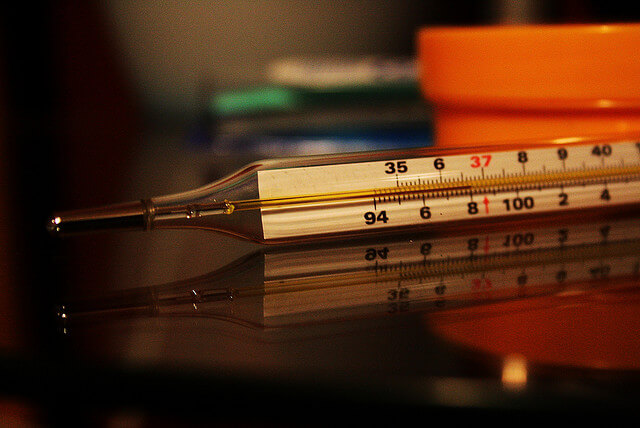
Being a first time parent is full of surprises. From the first few weeks of teaching the infant to eat solid food to comforting them when they get a boo-boo. Expect things like sore throats and ear infections. Those who aren’t members of the medical community, you’re going to need to stock-up on plenty o’ knowledge.
With fevers, newbies may touch the child’s forehead with their wrists. But ultimately, you’re going to need and use a thermometer to take the little one’s temperature. That’s why we’ve decided to give you a brief primer on how, when and at what age the instrument should be used. It sounds simple enough, but there are some basic best practices the ENT Center of Austin would like to pass along.
Options
Your mom used to have a glass mercury thermometer in the medicine cabinet. Step into the 21st century. Digital thermometers are much better for total accuracy. And for safety, too. The old mercury thermometers would occasionally break which could be a safety matter if it’s in the child’s mouth. Also, the modern-day units are much more precise.
When you visit us, we may use one that fits in the ear. Digital ear thermometers, AKA tympanic thermometers go really hi-tech. That device uses an infrared ray to tap the temperature in the ear canal.
But you can get a good digital thermometer from any drug store. One note of caution: If you purchase two — one for their mouth and the other for their rectum — label them. We need not explain why. You get it, right?
Likewise, read the instructions. That way you’ll be sure of how the tool works.
The Age of the Kid
Where you stick the thermometer is directly related to how old the child is. Some tips:
- Up to 3-months of age.
Newborns should have their temperature taken by rectum. Rub a dab of Vaseline on it before insertion. Put the infant on its back, lift their thighs and put it in place. Should you encounter any resistance, stop. Don’t want to damage anything. Either the digital thermometer will beep when it’s finished. No warning? About a minute will take care of business. - 3-months to 4-years.
No need to follow the above procedure. Simply purchase a temporal artery thermometer, digital pacifier thermometer or a digital ear thermometer. Once again, follow the manufacturer’s direction. The important thing is that you hold the unit in place. - 4-years and up.
Usually at this age they can hold the thermometer under their tongue. Tell the child to keep his or her mouth shut. Then after the thermometer beeps or after a minute, you’ve got a good reading. Let’s say they’ve eaten or drank something recently. Wait 15-minutes before you use the digital gadget. For those who are too congested to breathe through their nose, you might want to have a digital ear thermometer on hand.
Come See Us If …
Imagine that your baby is older than a year. Standard rule would be to make sure they’re drinking a lot of fluids, monitor their playing habits and how well the child is sleeping. Everything seems pretty copacetic? Don’t panic. Moreover, no reason to treat their fever.
Those under six months old can be given a child’s dose of acetaminophen like Tylenol. Older than that … Use ibuprofen (Advil, Motrin, etc.). Read the label carefully for proper dosage. Stay away from aspirin to deal with a fever until they’re at least 18-years old.
Ring us up or the family doctor if:
- Your kid is younger than 3-months old and has a rectal temperature of 100.4 F or higher.
- You child is older than 3-months and the reading is up around the 102 F range.
- They don’t seem to get any relief from OTC medication and the fever of 102 F lasts more than a day.
Again, no need to freak-out if they have a fever, you now know how to carefully monitoring your child’s temperature. Step off the bottom rung of the 18-year old ladder. You’re becoming a fully functional parent.
Image Source: flickr.com/photos/running-for-home/

